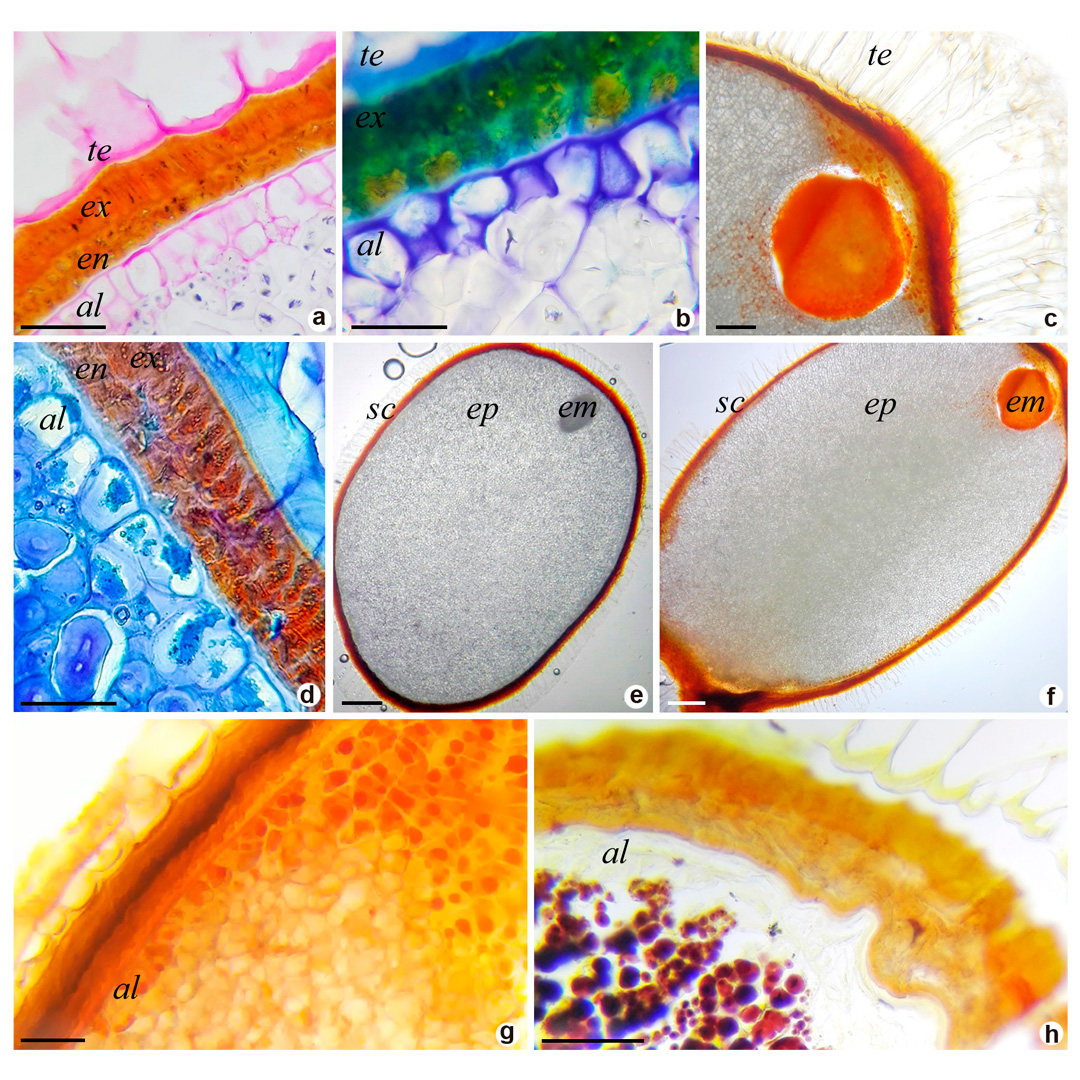Abstract
Drastic changes in dry tropical forest result in the loss of biological components and reveal the importance of studies on the biology of species living in it. The present study aimed to describe seed morphoanatomy, germination and post-seminal development of Bromeliaceae species in fragments of tropical dry forest in Sucre, Colombia. Seven species representing Bromelia and Tillandsia genera were evaluated. The results provide characteristics related to the habitat of each species and contribute to distinguish the genera evaluated: fruit and seed measurements, seed shape, plumose appendage, testa characteristics, and the aleurone layer, embryo endosperm ratio, types of reserves, constriction zone in the embryo and type of post-seminal development. Characteristics of plumose appendages and the presence of vascular bundles in the embryo also contribute to distinguish Tillandsia species. In T. elongata and T. flexuosa, high number of seeds per fruit (> 100), morphoanatomical aspects, high germination (> 92%) and plant formation (> 77%) percentages, and higher germination rate values (> 4.5) give them the potential capacity for establishment in this environment. Our results provide information with taxonomic and ecological relevance for bromeliads in dry tropical forest.
Key words
Bromelia; embryo; endosperm; germination; Tillandsia

 Thumbnail
Thumbnail
 Thumbnail
Thumbnail
 Thumbnail
Thumbnail
 Thumbnail
Thumbnail
 Thumbnail
Thumbnail
 Thumbnail
Thumbnail





